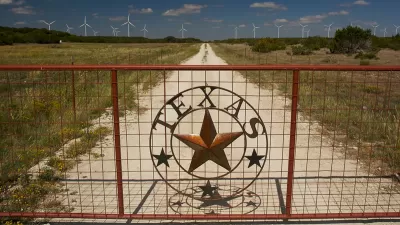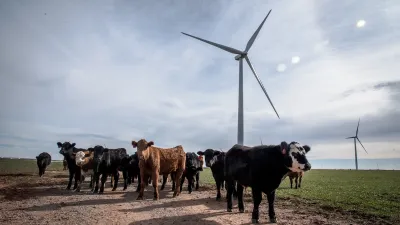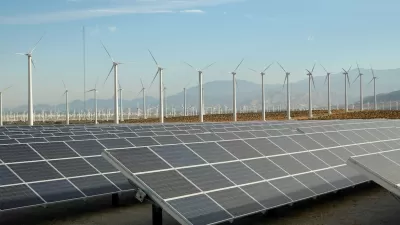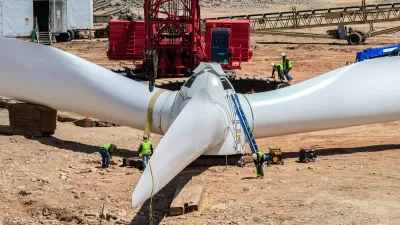The Wall Street Journal provides detailed coverage of the Texas wind energy industry, as well as the prospects for even greater adoption of renewable energy in the state.

"Texas has added more wind-based generating capacity than any other state, with wind turbines accounting for 16% of electrical generating capacity as of April," report Bill Spindle and Rebecca Smith. Now Texas is anticipating a huge surge in solar power.
As for how Texas, "one of the few reliably Republican states," jumped on the renewable energy bandwagon," Spindle and Smith trace the growth of the industry to former President George W. Bush's time in the governor's office.
The roots of Texas’ renewables boom go back to 1999, when then-Gov. George W. Bush and a Republican-dominated legislature overhauled the Texas power market. The free market-oriented deregulation broke the grip of most monopoly utilities that controlled generation, transmission and retail sales of electricity and introduced competitive auctions for wholesale power.
That market environment as enabled the state to create more than 19,000 megawatts of renewable capacity by April of 2016, according to the U.S. Department of Energy cited in the article. That's enough renewable energy to power 4 million homes.
Spindle and Smith reference the potential for similar growth in the Texas solar market in the future. Recent Planetizen coverage, however, has noted that solar businesses are struggling to gain momentum in the state.
The strength of the Texas wind energy industry, however, has been obvious since 2014, when the state began smashing its wind power records. There's also the city of Georgetown, near Austin, which announced its plans to go 100 percent renewable back in 2015.
FULL STORY: Which State Is a Big Renewable Energy Pioneer? Texas

Planetizen Federal Action Tracker
A weekly monitor of how Trump’s orders and actions are impacting planners and planning in America.

San Francisco's School District Spent $105M To Build Affordable Housing for Teachers — And That's Just the Beginning
SFUSD joins a growing list of school districts using their land holdings to address housing affordability challenges faced by their own employees.

The Tiny, Adorable $7,000 Car Turning Japan Onto EVs
The single seat Mibot charges from a regular plug as quickly as an iPad, and is about half the price of an average EV.

Seattle's Plan for Adopting Driverless Cars
Equity, safety, accessibility and affordability are front of mind as the city prepares for robotaxis and other autonomous vehicles.

As Trump Phases Out FEMA, Is It Time to Flee the Floodplains?
With less federal funding available for disaster relief efforts, the need to relocate at-risk communities is more urgent than ever.

With Protected Lanes, 460% More People Commute by Bike
For those needing more ammo, more data proving what we already knew is here.
Urban Design for Planners 1: Software Tools
This six-course series explores essential urban design concepts using open source software and equips planners with the tools they need to participate fully in the urban design process.
Planning for Universal Design
Learn the tools for implementing Universal Design in planning regulations.
Smith Gee Studio
City of Charlotte
City of Camden Redevelopment Agency
City of Astoria
Transportation Research & Education Center (TREC) at Portland State University
US High Speed Rail Association
City of Camden Redevelopment Agency
Municipality of Princeton (NJ)





























